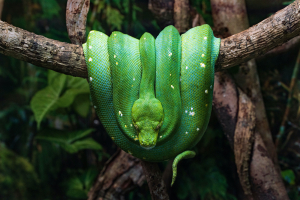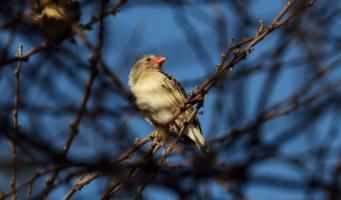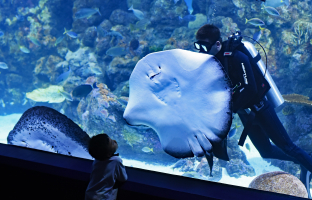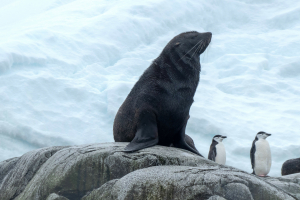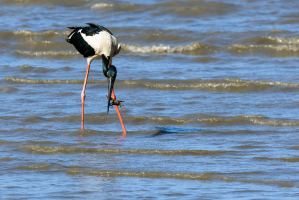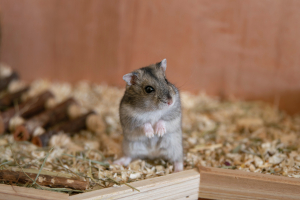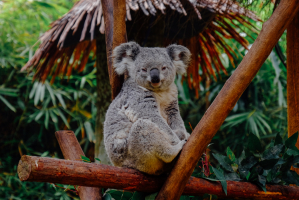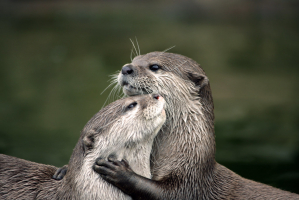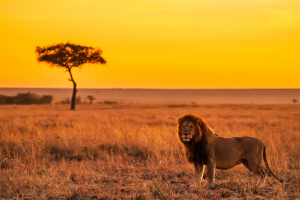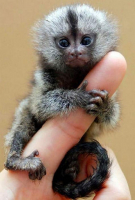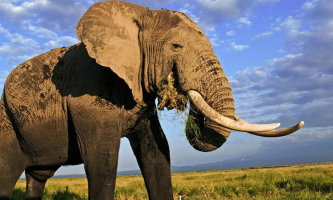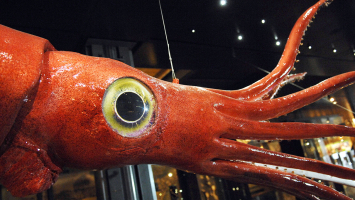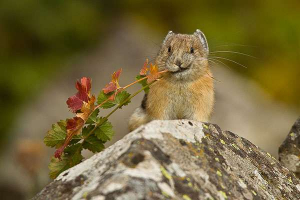Top 15 Common Animals That Start With "G"
The vast and diverse animal kingdom is home to a plethora of fascinating creatures, each contributing to the delicate balance of our ecosystems. In this ... read more...article, Toplist will explore some common animals that share a commonality beyond their biological classification – they all have names that start with the letter "G." From graceful giants to elusive ground-dwellers, these animals showcase the incredible diversity of life on Earth.
-
In the expansive tapestry of common animals that start with the letter "G," the gorilla emerges as a symbol of strength, intelligence, and familial bonds. Scientifically known as gorillas, these great apes inhabit the lush forests of Central and West Africa, captivating the world with their sheer physical presence and intricate social structures.
Gorillas are the largest living primates, characterized by their robust builds, prominent brows, and dark fur. The Silverback, a mature adult male with a distinctive silver-gray patch on his back, serves as the leader of the group. Gorilla groups, known as troops, also include females, their offspring, and occasionally subordinate males. These cohesive units form tight-knit communities, where social interactions and familial relationships play a crucial role in their daily lives.
The diet of gorillas primarily consists of vegetation, emphasizing leaves, stems, fruits, and other plant materials. Their powerful jaws and large molars are well-adapted for processing fibrous vegetation efficiently. Despite their imposing physical presence, gorillas are generally gentle and peaceful animals, with a social structure that revolves around cooperation and mutual care.
One of the defining characteristics of gorillas is their high level of intelligence. These great apes exhibit problem-solving skills, tool use, and the ability to communicate using a variety of vocalizations. Their sophisticated social behaviors include grooming rituals, play activities, and a range of vocal expressions that contribute to the complex communication within the troop.
Gorillas share a remarkable genetic similarity with humans, sharing approximately 98% of their DNA. This biological closeness underscores the interconnectedness of all primates and highlights the importance of conservation efforts to preserve these intelligent and emotionally complex beings.
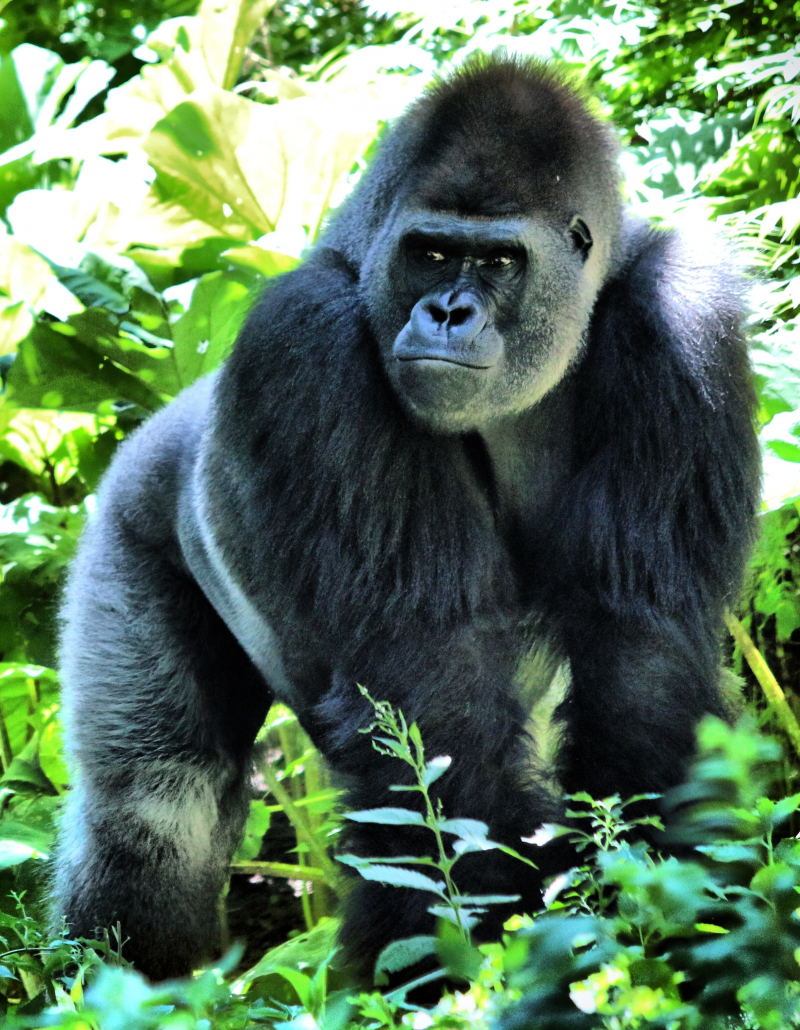
unsplash.com Video by Nat Geo Kids -
The gerenuk, a captivating and unique creature, takes its place among the common animals that start with the letter "G." Scientifically known as Litocranius walleri, these slender antelopes are native to the arid regions of East Africa, where their distinct physical features and behaviors set them apart in the animal kingdom.
Characterized by their elongated necks and slender bodies, gerenuks are often referred to as "giraffe-necked antelopes." This remarkable adaptation enables them to reach high branches and foliage, a valuable trait in their arid habitats where ground-level vegetation can be scarce. Their long legs, elegant physique, and a compact head contribute to their overall graceful appearance.
In terms of coloration, gerenuks typically display a reddish-brown to grayish coat on their upper bodies, with lighter underparts. Unlike other antelopes, they lack prominent facial markings, adding to their sleek and understated aesthetic. Both males and females possess slightly curved horns, and their eyes, positioned high on the sides of their heads, provide an enhanced field of vision for spotting potential predators.
Gerenuks are primarily browsers, relying on leaves, buds, and shoots from shrubs and trees for their diet. What sets them apart is their ability to extract moisture from the plants they consume, allowing them to thrive in arid environments with limited access to water sources. This adaptation showcases their remarkable resilience and ability to adapt to challenging conditions.
Socially, gerenuks form small groups led by a dominant male. These groups, typically consisting of females and their offspring, engage in coordinated activities such as foraging and maintaining social bonds. The males, recognizable by their slightly curved horns, play a protective role, utilizing their elevated necks to keep watch over the surroundings for potential threats.
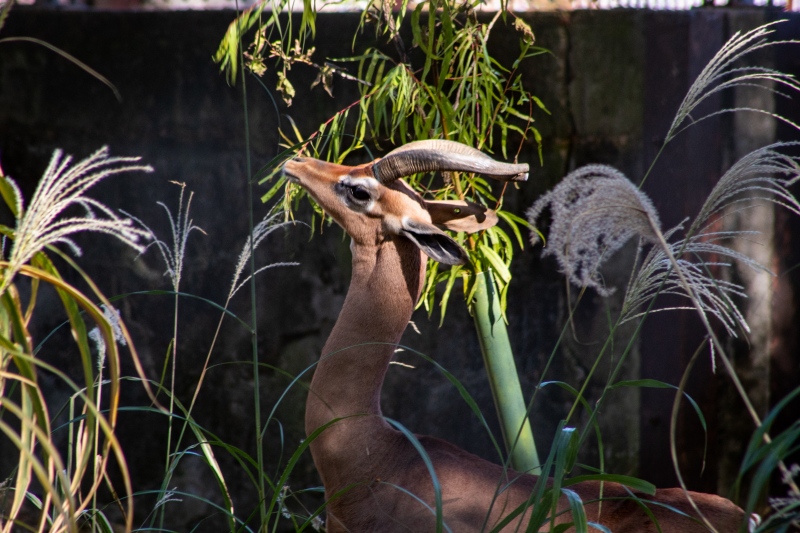
unsplash.com Video by Kenya Wild Parks -
Geckos are small reptiles known for their unique features and widespread distribution in various parts of the world. These lizards are a diverse group, with over 1,600 different species, and they can be found in a range of habitats, from tropical rainforests to arid deserts.
One notable characteristic of geckos is their ability to climb smooth surfaces, including glass and walls, with ease. This remarkable skill is attributed to specialized toe pads that have millions of hair-like structures called setae. The interactions between these setae and the surface create a molecular attraction known as van der Waals forces, allowing geckos to adhere to surfaces and move effortlessly in seemingly gravity-defying ways.
Geckos display a wide array of colors and patterns, making them visually striking. Some species are known for their vibrant hues, while others have camouflaging patterns that help them blend into their surroundings and avoid predators. The ability to change color is not as pronounced in geckos as it is in some other lizard species, but their natural coloration often serves as a form of protection.
These reptiles are primarily insectivores, feeding on a diet of small insects, spiders, and other invertebrates. With their keen eyesight, geckos are skilled hunters, often using their agility to pounce on prey or employing a sit-and-wait strategy.
Geckos also have a unique vocalization ability. They are known for making various sounds, including chirps and clicks, which are used for communication. These vocalizations play a role in establishing territory, attracting mates, and signaling danger.
Keeping geckos as pets is quite popular, with species like the leopard gecko being common in the pet trade. These captivating creatures require specific care, including a suitable enclosure, proper heating, and a well-balanced diet. Overall, geckos captivate both scientists and enthusiasts alike with their remarkable adaptations and charming behaviors.
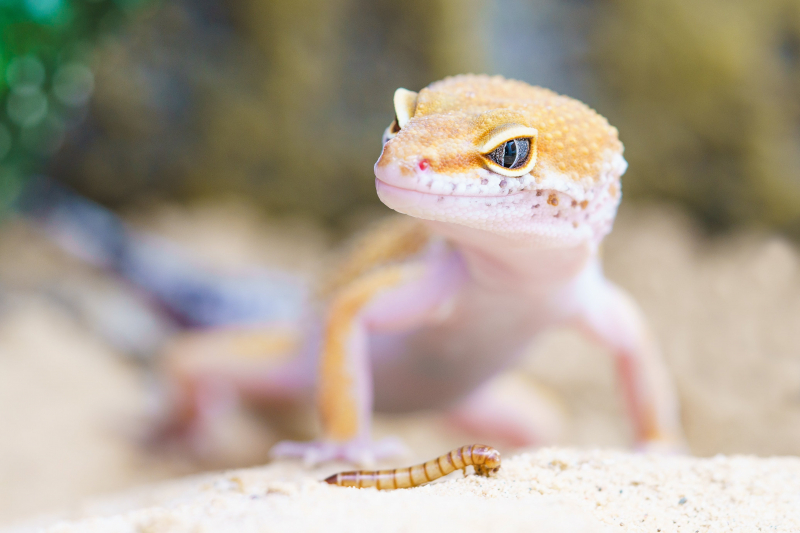
pexels.com Video by Animal Fact Files -
The Giraffe, an iconic and gracefully towering creature, holds the title of the world's tallest land mammal. Scientifically known as Giraffa camelopardalis, these herbivores are native to the savannas and open woodlands of Africa. Instantly recognizable by their elongated necks, distinctive coat patterns, and elegant stride, giraffes are not only strikingly beautiful but also hold a unique place in the animal kingdom.
Perhaps the most distinguishing feature of the giraffe is its exceptionally long neck, which can reach up to six feet in length. This adaptation is a remarkable example of evolutionary specialization, enabling giraffes to reach leaves high in the treetops that are inaccessible to other herbivores. Despite its considerable length, a giraffe's neck contains the same number of vertebrae as that of other mammals, including humans - only seven.
Giraffes exhibit a distinctive coat pattern that sets them apart in the savanna landscape. The irregular patches on their fur, ranging from tan to orange or chestnut, are separated by white spaces. Each giraffe's coat pattern is unique, akin to a human fingerprint, allowing for individual identification. The patterns not only serve a camouflage function in their natural habitat but also play a role in social communication among individuals.
These gentle giants have a prehensile tongue that can extend up to 45 centimeters, facilitating their ability to grasp and strip leaves from tree branches. Their primary diet consists of leaves, flowers, and fruits from various acacia species. The giraffe's ability to consume such fibrous and challenging vegetation is aided by a stomach with multiple compartments and a specialized digestive system.
Giraffes are social animals, often found in loose groups known as towers, typically composed of females and their young. Males, known as bulls, may form smaller, transient groups. These social structures protect from predators and aid in cooperative behaviors such as vigilance and caring for young calves.
The giraffe's characteristic gait, called "pacing," involves moving both legs on one side of the body simultaneously, creating an effortless and distinctive walk. Despite their towering height, giraffes are surprisingly agile and can run at speeds of up to 35 miles per hour.
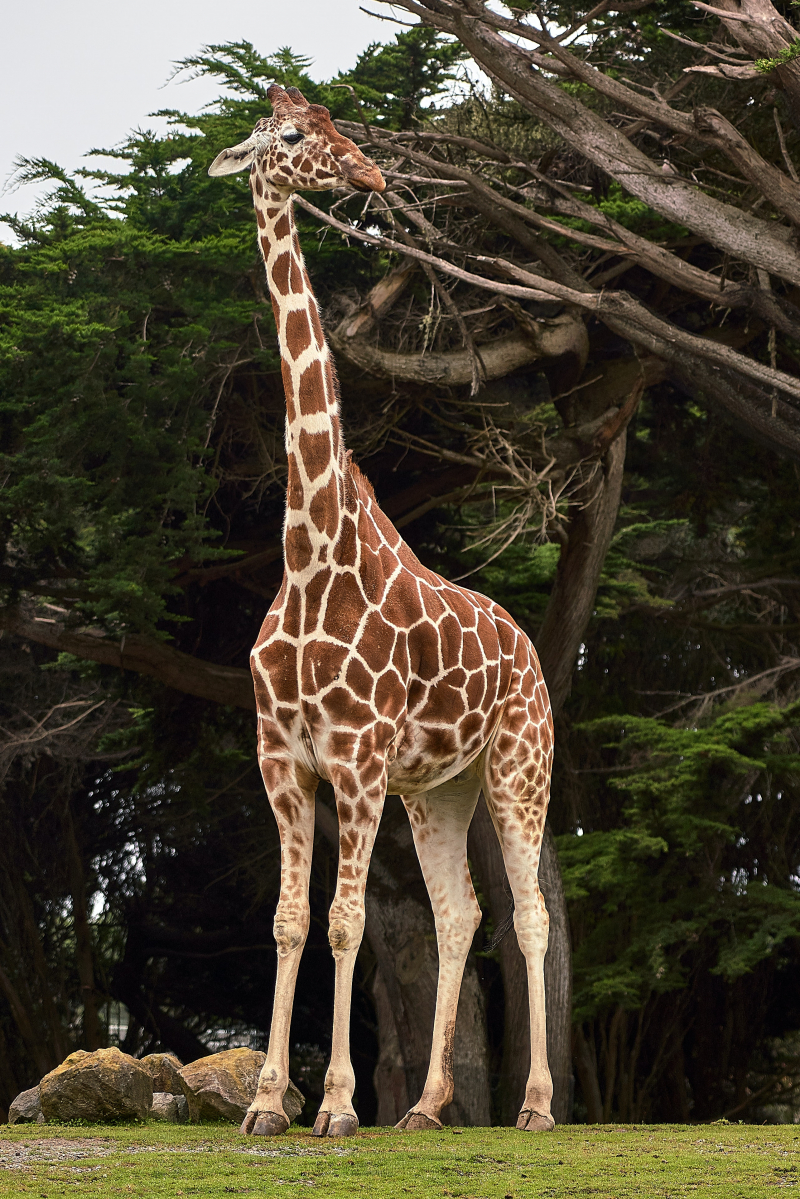
unsplash.com Video by Nat Geo WILD -
Goats, the common and hardy animals that start with the letter "G," are domesticated mammals with a rich history of interaction with humans. Belonging to the genus Capra, goats are found worldwide in various environments, displaying adaptability to diverse climates and landscapes.
One distinctive feature of goats is their unique set of horns. While not all goats have horns, many breeds exhibit them in both males and females. These curved structures serve various purposes, including defense, establishing dominance within the herd, and aiding in climbing, which is another remarkable ability of these animals.
Goats have a reputation for their excellent climbing skills. Their split hooves, with a rubbery pad in the center, provide them with traction on uneven and rocky terrain. This enables them to climb steep surfaces such as cliffs and mountains, reaching vegetation that other grazing animals might find inaccessible. Goats are often employed for land management purposes, as their browsing behavior helps control vegetation growth in areas prone to wildfires.
In terms of diet, goats are versatile eaters, known as browsers. They consume a wide variety of plant materials, including grasses, shrubs, and leaves. Their adaptability allows them to thrive in environments with limited food resources, making them valuable assets in agriculture and sustainable land management.
Beyond their contributions to agriculture, goats play a crucial role in providing various products. Goat milk is a nutritious alternative to cow's milk, rich in essential nutrients and easier to digest for some individuals. Goat meat, known as chevon or mutton, is a dietary staple in many parts of the world, prized for its lean and flavorful qualities.
Goats are also social animals that often form close-knit groups known as herds. Their hierarchical social structure includes a dominant individual, often a mature male called a "buck," and several females with their offspring. Goats communicate through vocalizations, body language, and scent marking, reinforcing their social bonds within the herd.
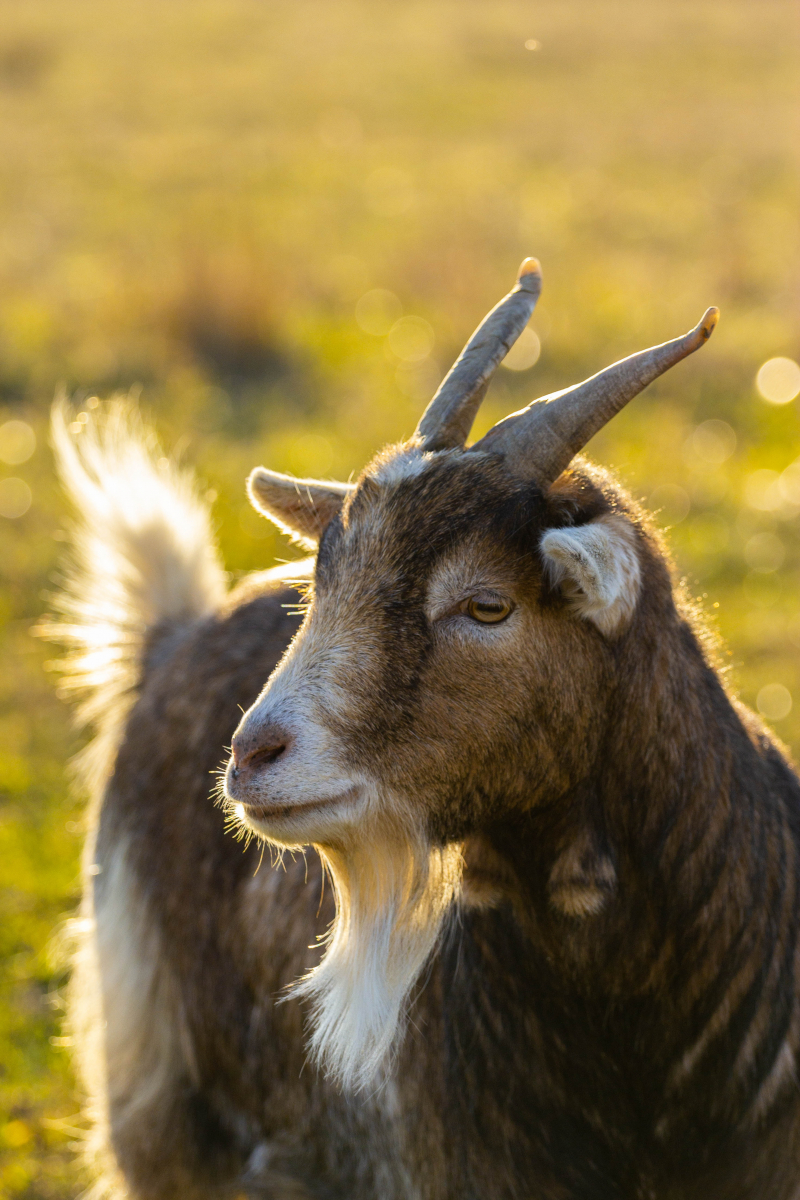
unsplash.com Video by Sunflower Farm Creamery -
The Galapagos Penguin (Spheniscus mendiculus) is a fascinating and unique bird species that starts with the letter "G." These charming flightless creatures are not only charming but also hold the title of being the smallest species of penguin worldwide, with adults reaching 53 cm (21 inches) in length and weighing between 1.7 to 2.6 kg (4-6 lbs). Unlike most penguins, Galapagos Penguins reside in the Galapagos Islands, the only penguin species living near the equator and the only one in the Northern Hemisphere.
Despite the warmer climate, the Galapagos Penguin has adapted to survive in the relatively cooler waters around the islands. They have a distinct black-and-white appearance, with a narrow white band stretching from behind their eyes to their necks. The upper portions of their bodies, including their heads and backs, are black, while their bellies are white. This coloration provides excellent camouflage, as the white belly blends in with the sunlight when viewed from below by predators, while the black back merges with the ocean's darkness when seen from above.
The lives of Galapagos Penguins revolve around the ocean, where they hunt for food. These penguins predominantly feed on small fish such as sardines and anchovies, diving up to a depth of 20 meters to catch their prey. These dives typically last between 30 seconds to two minutes, requiring vast amounts of energy expended in pursuit of food.
Galapagos Penguins exhibit unique mating and nesting behaviors, taking advantage of the islands' isolation. They nest in various locations, from rock crevices along the shoreline to the vegetated areas further inland. During the breeding season, these penguins nest in colonies, with the female typically laying one or two eggs that both parents diligently incubate for roughly 38 days. Hatchlings are born without waterproof feathers and require parental care to maintain warmth and regulate body temperature.
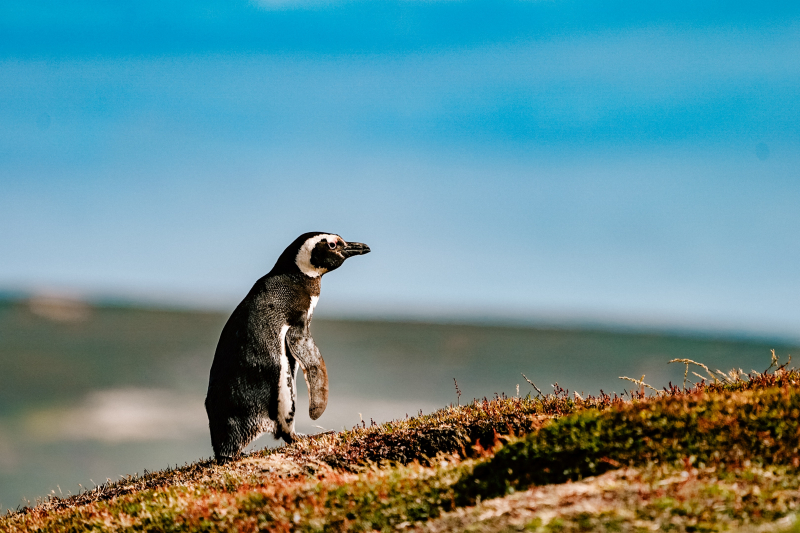
unsplash.com Video by Nature Bites -
Garden eels are a fascinating and unique group of marine animals that start with the letter 'G.' They belong to the subfamily Heterocongrinae, which falls under the Congridae family. These eels are characterized by their slender, elongated bodies and their unusual habit of living in burrows within sandy or muddy ocean bottoms. Approximately 36 species of garden eels have been identified, with the spotted garden eel (Heteroconger hassi) being one of the most well-known and widespread species.
Garden eels typically reside in warm, shallow waters in the Indian and Pacific Oceans, often found at depths ranging from 1 to 30 meters. Some species, however, can dwell at depths of up to 250 meters. They inhabit coastal and offshore regions, preferring areas with moderate currents capable of delivering a steady supply of nutrients and plankton to their burrows. For this reason, garden eels are often observed in large groups or colonies, forming dense underwater gardens.
The appearance of garden eels is quite distinctive. They can attain a maximum length of 40 centimeters (16 inches), and their bodies are long, thin, and snake-like. Adults have large, yellow eyes with prominent, upturned mouths that protrude from their sandy burrows, allowing them to capture planktonic prey. The skin of garden eels is smooth, with most species displaying a mottled coloration featuring various patterns of white, yellow, and brown spots.
Garden eels exhibit a range of intriguing behaviors, as they spend much of their time half-buried in sand or mud. They extract oxygen from the water through their skin and gills while hunting for food. When hunting, garden eels sway their bodies rhythmically, creating a wave-like motion that attracts tiny marine organisms such as shrimps, worms, and fish larvae. Once prey approaches, these eels swiftly capture and consume their food.
One of the most remarkable aspects of garden eels is their social structure. They prefer to live in colonies, which can range in size from a few individuals to several thousand eels. When establishing burrows, the eels ensure that they remain close to their neighbors, allowing them to provide support and protection to one another. Additionally, garden eels have been observed engaging in complex courtship and mating rituals, with males employing elaborate body movements and color changes to attract females.
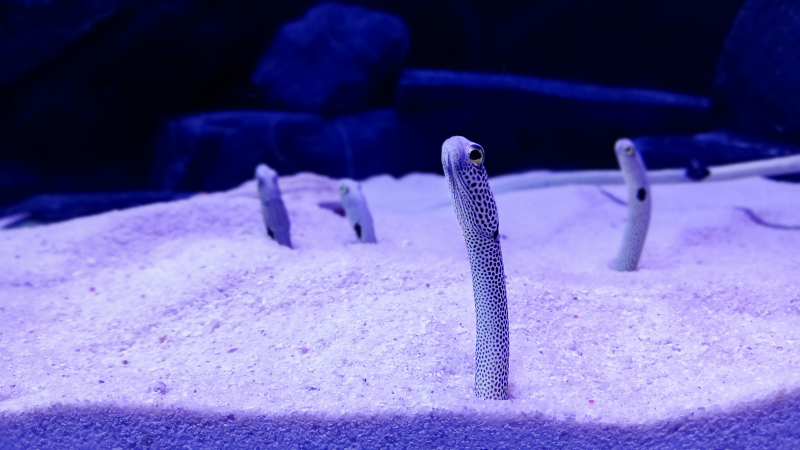
unsplash.com Video by Nature on PBS -
The Golden Eagle, with its majestic presence and an impressive wingspan, stands as a symbol of power and wilderness. Scientifically known as Aquila chrysaetos, this formidable raptor is one of the largest and most widespread eagle species, inhabiting diverse habitats across the Northern Hemisphere.
The golden eagle is aptly named for its distinctive golden-brown plumage on the back of its head and neck, creating a regal and striking appearance. The rest of its body is predominantly dark brown, providing effective camouflage in its natural environments. Adult golden eagles boast a wingspan that can exceed seven feet, making them powerful and efficient hunters in the skies.
These eagles are well-adapted to a variety of landscapes, including mountainous regions, open plains, and wooded areas. They are found across North America, Europe, Asia, and parts of northern Africa. Golden eagles typically prefer expansive territories with access to open spaces for hunting and elevated perches for scouting.
Golden eagles are apex predators, preying on a diverse range of animals. Their diet includes mammals like rabbits and hares, as well as birds, reptiles, and occasionally carrion. Their keen eyesight and powerful talons make them formidable hunters, capable of capturing prey in flight or from the ground with precision.
The life history of golden eagles is marked by remarkable behaviors, including soaring flights and aerial displays during courtship. These eagles form monogamous pairs that often mate for life. During courtship, they engage in impressive aerial displays, showcasing their agility and synchronized movements. Nesting sites, often located on cliffs or in elevated areas, serve as crucial locations for raising their young.
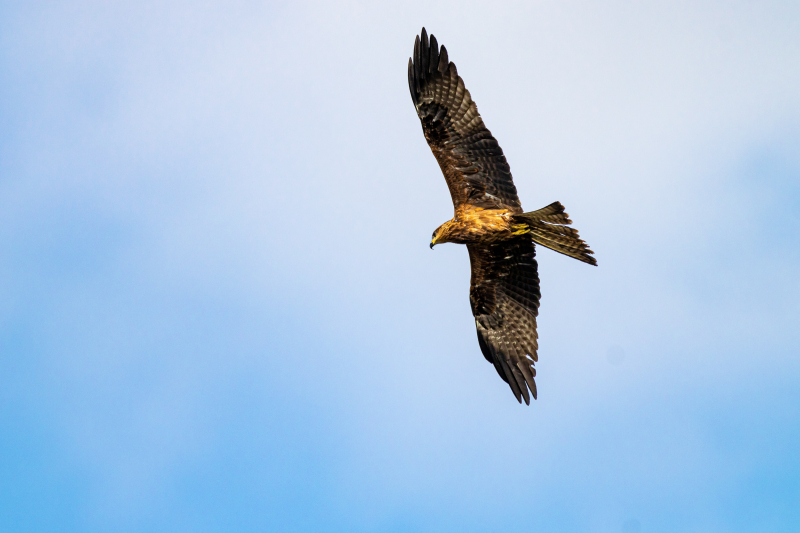
unsplash.com Video by BBC Earth -
The Gaboon Viper (Bitis gabonica) stands as one of the most formidable and visually striking venomous snakes in the world. Found in the rainforests and savannas of sub-Saharan Africa, this viper belongs to the family Viperidae and is renowned for its potent venom, distinctive appearance, and remarkable adaptations.
Characterized by its large size and heavy-bodied build, the Gaboon Viper ranks among the heaviest vipers globally, with some individuals exceeding 6 feet in length. The snake's most distinctive feature is its triangular head, adorned with striking horn-like projections called "horns" or "horns of Cerastes." These projections, along with its intricate camouflage patterns, serve as effective adaptations for concealment in its natural habitat.
The Gaboon Viper boasts a remarkable coloration that aids in its camouflage. Its patterned scales feature a combination of earthy tones, including shades of brown, tan, and olive, interspersed with irregular patches and lines. This intricate pattern mimics the dappled sunlight and leaf litter found on the forest floor, providing the snake with effective camouflage against potential predators and unsuspecting prey.
Known for its potent venom, the Gaboon Viper possesses long, hinged fangs that can deliver a substantial quantity of venom deep into its prey. The venom contains a mix of hemotoxic and cytotoxic components, affecting the blood and tissue of the bitten organism. While the Gaboon Viper is not known for aggressive behavior, its cryptic appearance and ability to remain motionless make it challenging to spot, leading to potential danger if inadvertently provoked.
Despite its fearsome reputation, the Gaboon Viper plays a crucial role in its ecosystem. As an ambush predator, it relies on its camouflaged appearance to lie in wait for small mammals, birds, and amphibians. The snake's patient hunting strategy involves remaining motionless for extended periods until prey ventures near, at which point it strikes with remarkable speed and accuracy.
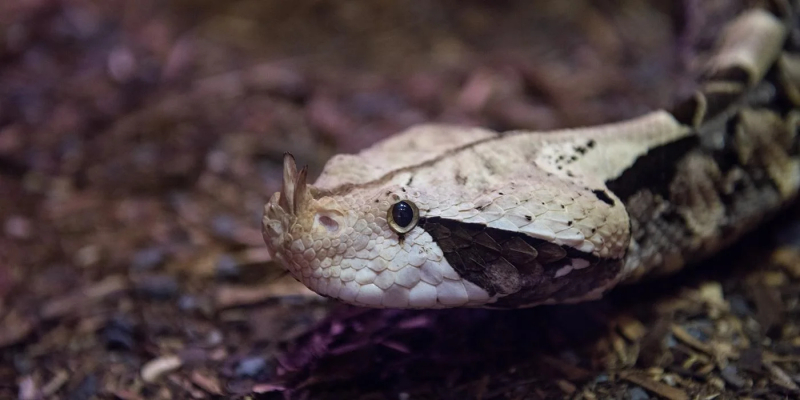
nationalzoo.si.edu 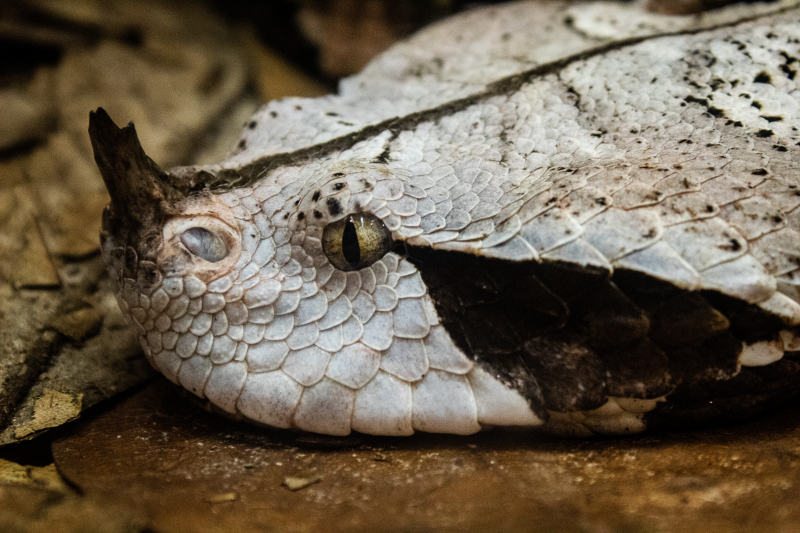
unsplash.com -
Gerbils are small, fascinating creatures that make popular pets for many people worldwide. As one of the common animals that start with 'G,' gerbils have unique characteristics that distinguish them from other small mammals. Originating from arid regions in Africa and Asia, gerbils have adaptations enabling them to thrive in such environments, making them incredibly interesting creatures to learn about and observe.
Gerbils belong to the subfamily Gerbillinae within the family Muridae, which includes several genera with over 110 species. Among the most popular species of gerbils kept as pets is the Mongolian gerbil (Meriones unguiculatus). This particular species has a body size ranging from 110 to 135 mm and can live for three to five years in captivity.
The Mongolian gerbil is known for its distinct appearance, featuring a fur-covered body that ranges in color from a light agouti (grayish-brown) to almost pure white. These rodents have furless tails, with conspicuous rings of darker colors encircling them. Gerbils' eyes are large and dark, while their ears are relatively large and covered with short, fine hair.
Gerbils are primarily burrowing animals, and their hind legs are larger and more muscular than their front legs, giving them incredible digging ability. They are also known for their exceptional speed, capable of evading predators with deft movements and agility. Adapted to their arid environments, gerbils have an efficient water balance system, allowing them to absorb much of the moisture required from their food.
As pets, gerbils are appreciated for their gentle and friendly nature. They are typically social creatures, living in groups, and establishing a close bond with their primary caretaker. Gerbils are active during the day and exhibit various behaviors, including burrowing, running, and jumping, as well as the unique behavior of thrashing their tails when excited or frightened.
Providing a proper habitat for pet gerbils is essential to support their natural behaviors and ensure their well-being. A well-ventilated cage with ample space to move around is recommended, along with a sandy surface for digging and burrowing. Gerbils require a balanced diet consisting mainly of rodent seeds, vegetables, and water provided through a sipper bottle.

unsplash.com Video by Knox Stats & Facts -
The Gray Seal (Halichoerus grypus) is a charismatic and robust marine mammal found along the coastlines of the North Atlantic Ocean. As one of the largest seal species, gray seals are characterized by their distinctive appearance, sociable behaviors, and widespread distribution.
Easily recognizable by their mottled gray or brown fur and distinctive V-shaped nostrils, gray seals exhibit sexual dimorphism, with males generally larger than females. Adult males, known as bulls, can reach lengths of up to 10 feet and weigh over 800 pounds, while adult females, or cows, are slightly smaller. These seals possess a streamlined and barrel-shaped body, adapted for efficient movement through the water.
Gray seals inhabit a variety of coastal environments, from rocky shorelines to sandy beaches and offshore islands. They are known for their versatile foraging habits, consuming a diet primarily consisting of fish, squid, and crustaceans. Their adept swimming abilities and streamlined bodies make them skilled hunters, capable of diving to considerable depths in search of prey.
One of the notable characteristics of gray seals is their sociable nature. They are known to form colonies, or rookeries, during the breeding season. These colonies provide a communal environment for breeding, giving birth, and rearing their pups. Gray seal pups are born with a soft, white fur coat known as lanugo, which is later molted to reveal their more characteristic gray or brown coloration.
Breeding colonies of gray seals can be found in various locations, from the coasts of New England in the United States to the shores of the United Kingdom and Scandinavia. These colonies play a crucial role in the life cycle of the gray seal, providing a safe space for pupping and fostering social interactions among individuals.
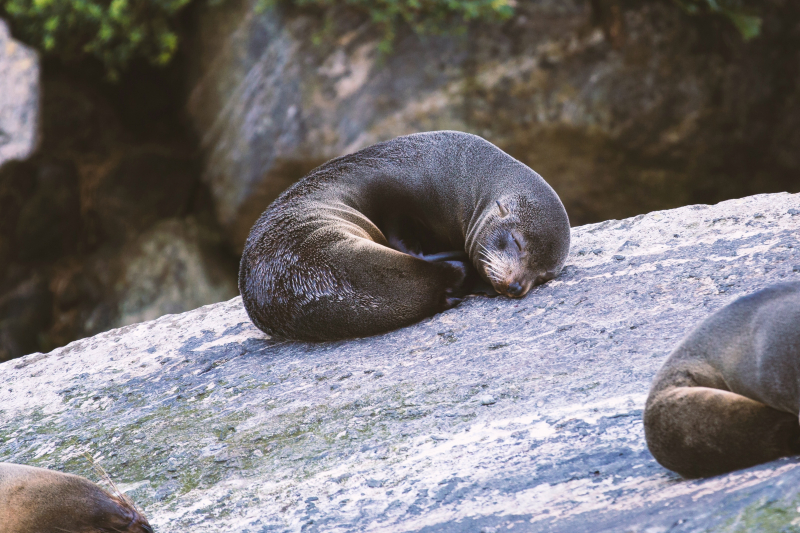
unsplash.com Video by Smithsonian Channel -
The Gannet, a seabird belonging to the Sulidae family, is an impressive marine aviator known for its remarkable diving abilities and striking appearance. With a global distribution, gannets are primarily found in temperate and subpolar oceans, creating spectacular colonies on cliffs and islands where they congregate for breeding and feeding.
One of the most notable characteristics of gannets is their striking plumage. Adult gannets typically have white bodies with black wingtips, while their heads are often tinged with pale yellow or golden hues. During the breeding season, their bills and eye rings may take on a blue or black coloration, adding to their overall elegance.
Gannets are exceptional divers, executing high-speed plunge dives from considerable altitudes to capture prey underwater. Their streamlined bodies and long, slender wings contribute to their aerodynamic efficiency, enabling them to achieve impressive speeds during their dives. The plunge can be so forceful that gannets can reach depths of up to 30 meters (nearly 100 feet) as they pursue schools of fish beneath the ocean's surface.
Breeding colonies of gannets are a sight to behold, often established on cliffs, rocky islands, or coastal areas. These colonies can house thousands of pairs of birds, each pair claiming a nesting site that is vigorously defended. Gannets are known for their elaborate courtship displays, involving mutual preening, bill tapping, and sky-pointing, where the birds face each other and stretch their bills skyward.
Gannets are primarily piscivores, with fish comprising the bulk of their diet. They are adept hunters, utilizing their keen eyesight to spot shoals of fish from above. Once prey is located, they fold their wings back and dive with incredible precision, using their webbed feet for propulsion underwater.
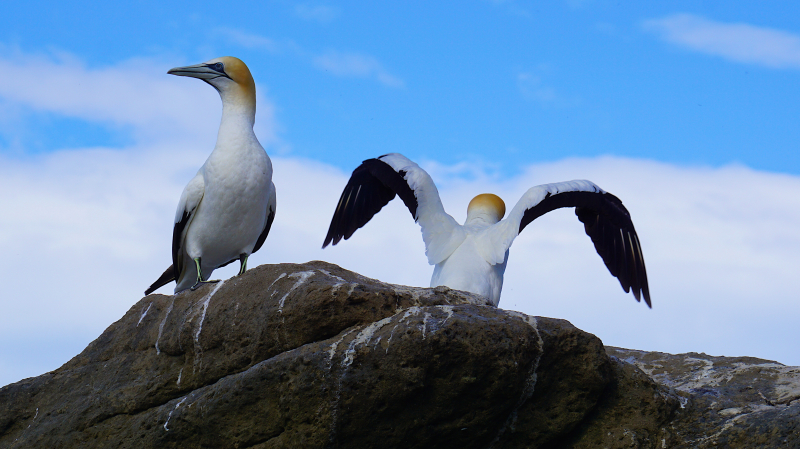
unsplash.com Video by Nat Geo WILD -
The Green Sturgeon (Acipenser medirostris) is a remarkable and ancient fish species that inhabits the coastal waters of the North Pacific, ranging from the Bering Sea down to California. As one of the largest sturgeon species, the green sturgeon belongs to the family Acipenseridae and has garnered attention for its unique characteristics, ecological importance, and conservation status.
This species earns its name from the greenish coloration that can be observed on its back and head, a hue resulting from algae growing on its skin. Green sturgeons possess a distinctive and elongated snout, which sets them apart from other sturgeon species. Their bodies are covered in bony plates, known as scutes, rather than traditional fish scales, giving them a prehistoric and armored appearance.
One of the remarkable aspects of green sturgeons is their long lifespan, with individuals capable of living for several decades. Some individuals have been reported to live beyond 50 years. Despite their longevity, green sturgeons are slow to mature and have a relatively low reproductive rate, making them vulnerable to population declines.
Green sturgeons are anadromous, meaning they migrate between saltwater and freshwater environments during different stages of their life cycle. They spawn in rivers and then migrate back to coastal waters, where they spend a significant portion of their lives. These migratory behaviors are critical for their survival and reproductive success.
The green sturgeon is a valuable species both ecologically and economically. Beyond its role in maintaining the balance of aquatic ecosystems, it holds cultural significance for indigenous communities along its range. Indigenous peoples have relied on sturgeon for food, ceremonial purposes, and traditional practices for generations.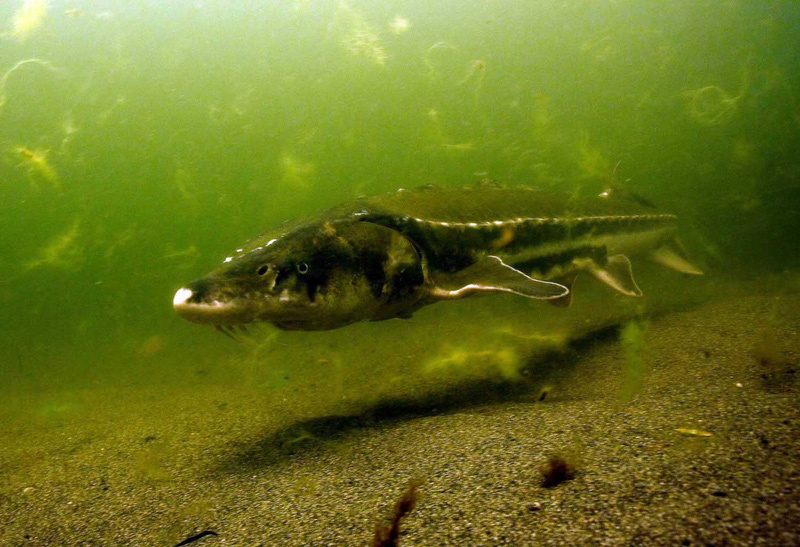
fisheries.noaa.gov Video by klamathmedia -
The Gray Wolf, scientifically known as Canis lupus, stands as an iconic and keystone species in the world of mammals. With a vast historical range spanning North America, Europe, Asia, and parts of the Middle East, the gray wolf has played a significant role in ecosystems and human cultures for millennia.
Physically characterized by its robust build, sharp snout, erect ears, and a thick fur coat that can range from gray to brown, black, and even white, the gray wolf is well-adapted to diverse environments. Its keen senses, powerful jaws, and strong limbs make it a formidable predator and a symbol of wilderness.
Gray wolves are highly social animals, typically forming packs led by an alpha pair – a dominant male and female. Pack structure facilitates cooperative hunting, efficient communication, and the sharing of parental responsibilities. The bonds within a wolf pack are strong, and their intricate social dynamics contribute to the pack's success in hunting and raising offspring.
As carnivores, gray wolves have a diverse diet that includes ungulates such as deer, elk, and moose. Their predatory role plays a crucial part in regulating prey populations and promoting ecosystem health. Wolves are apex predators, and their presence can have cascading effects on the abundance and behavior of other species within their ecosystems.
Despite their ecological significance, gray wolves have faced extensive persecution and habitat loss, leading to declines in their populations. In various regions, deliberate extermination programs aimed at protecting livestock and eliminating perceived threats to human safety severely reduced wolf numbers. By the mid-20th century, gray wolves were extirpated from many areas of their historical range.
Cultural significance surrounds the gray wolf in many societies, where it is often portrayed as a symbol of strength, loyalty, and cunning. Folklore and mythology in various cultures depict the wolf as a complex and revered figure, embodying both positive and negative traits.
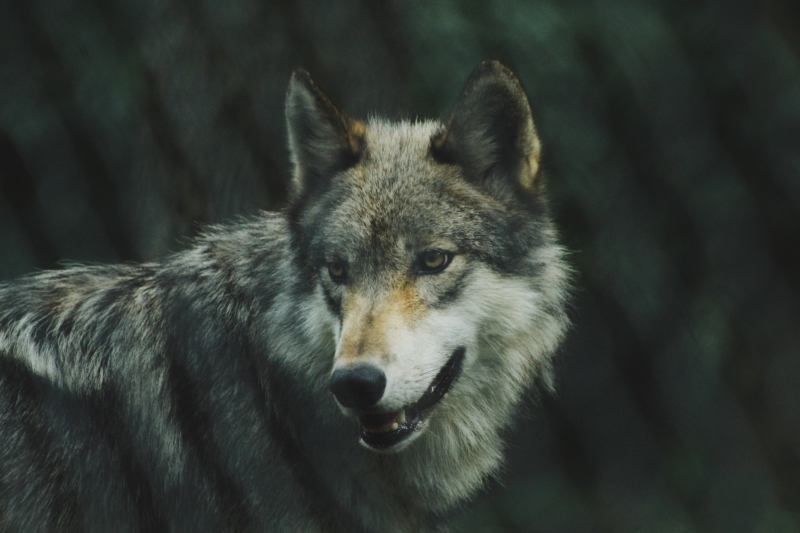
unsplash.com Nat Geo Kids -
In the realm of common animals that start with the letter "G," the grasshopper emerges as a fascinating and ubiquitous insect, known for its distinctive features and vibrant presence in various ecosystems. Scientifically classified under Orthoptera, grasshoppers are prevalent on every continent except Antarctica, showcasing their adaptability to diverse environments.
The grasshopper's most recognizable feature is its hind legs, specially adapted for powerful and agile jumping. These legs, equipped with large muscles, enable grasshoppers to propel themselves great distances, aiding in both evasive maneuvers and efficient foraging. Their bodies are typically streamlined, with wings that allow them to cover even greater distances when needed.
One defining characteristic of grasshoppers is their remarkable ability to produce rhythmic and often melodic sounds. They accomplish this by rubbing their hind legs against their wings or abdomen, a behavior known as stridulation. This acoustic communication serves various purposes, including attracting mates, establishing territory, and warning of potential threats. The distinct sounds of summer, often associated with warm and grassy landscapes, can often be attributed to the chorus of chirping grasshoppers.
Grasshoppers are herbivores, primarily feeding on various plants, grasses, and crops. Their voracious appetite can sometimes lead to challenges in agriculture, as they may cause damage to crops when present in large numbers. However, they also play a crucial role in ecosystems as both prey for other animals and contributors to nutrient cycling.
These insects undergo a series of molts as part of their life cycle, shedding their exoskeletons to accommodate growth. The stages between molts are called instars, and each molt brings the grasshopper closer to maturity. Grasshoppers typically have incomplete metamorphosis, meaning their young resemble miniature versions of the adults, and they undergo a series of molts rather than a distinct larval stage.
From open fields to meadows and grassy plains, grasshoppers are integral components of terrestrial ecosystems. While some species are more solitary, others form swarms, displaying collective behaviors that can mesmerize and impact the surrounding environment. As common animals that start with "G," grasshoppers contribute to the intricate balance of nature, showcasing the diverse and often underestimated world of insects that coexist with us on our planet.
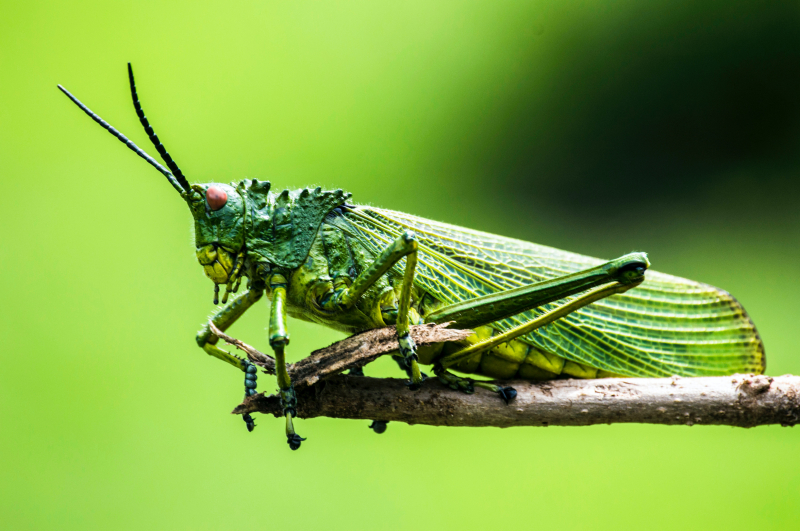
unsplash.com Video by GoTrails

















